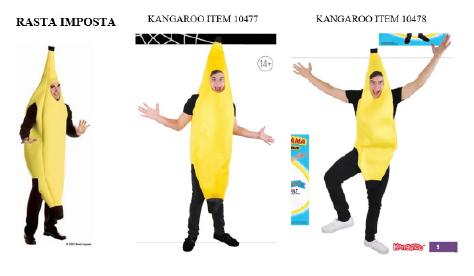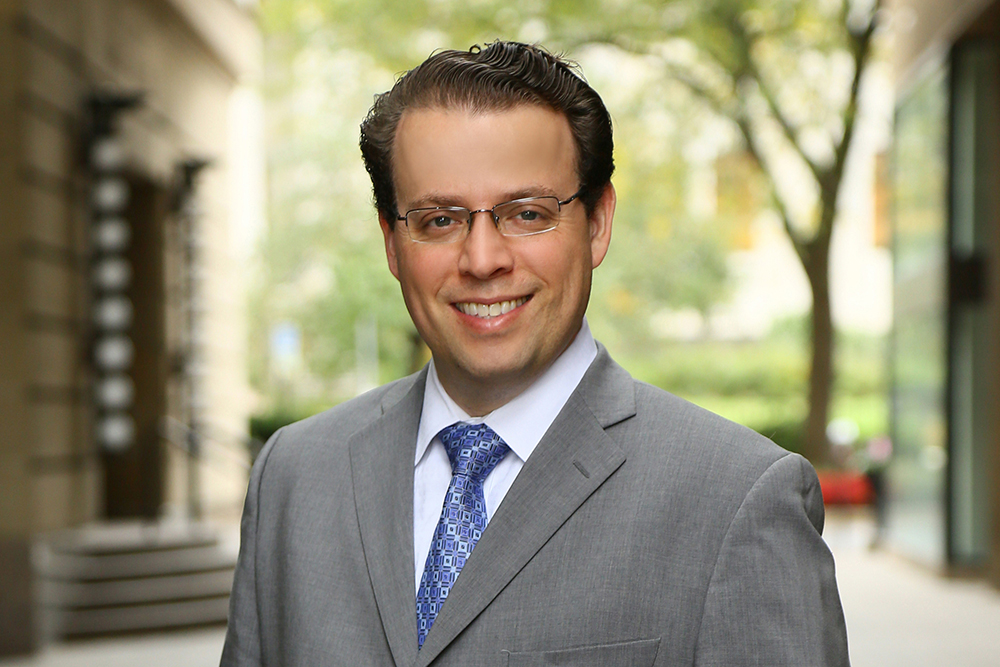McNees 2019 in Review – Trademarks, Copyrights and Patents
January 7, 2020
Publications
From Supreme Court headlines, to big brand disputes, to the year of cautionary tales, 2019 proved to be another remarkable year for intellectual property law. With so many notable developments in trademark, copyright, and patent law, 2019 will be a hard year to top. Let’s take a look back at some of our favorite intellectual property law cases from 2019 and what we are anticipating for 2020.
Trademark Law
A Bankrupt Licensor Always Pays His Debts
In May 2019, in Mission Products v. Tempnology, the Supreme Court resolved a circuit court split regarding what happens to a trademark license when the trademark owner (licensor) declares bankruptcy. The Supreme Court held that a licensee may continue to use a trademark subject to a trademark license agreement even after the licensor “rejects” (or breaches) the trademark license and discharges its obligations under the agreement. Under bankruptcy law, a debtor has the option to “reject” certain contracts (“executory contracts”) to alleviate itself of unperformed obligations. However, the Supreme Court followed the general rule that rejection of an executory contract does not revoke the non-breaching party’s rights under the agreement, including a licensee’s rights to use a bankrupt licensor’s trademark. For a more detailed analysis of Mission Products v. Tempnology, take a look at our May client alert here.
Scandal at the High Court
In June 2019, in Iancu v. Brunetti, the Supreme Court held the Lanham Act’s ban on registration of immoral or scandalous trademarks is unconstitutional. In December of 2017, in light of the Supreme Court’s ruling that the Lanham Act’s ban on disparaging marks violated the First Amendment in Matal v. Tam, the Federal Circuit ruled the ban on immoral or scandalous trademarks unconstitutional, reversing the Trademark Office’s decision to refuse registration for the trademark FUCT for apparel. In affirming the Federal Circuit’s ruling, the Supreme Court relied heavily on the reasoning in Matal v. Tam—that the ban was an impermissible form of viewpoint discrimination under the First Amendment.
STONE Cold Crazy Over Beer Packaging
The dispute in Stone Brewing Co. v. Molson Coors arises at the confluence of a rapidly changing and consolidating beer industry and a macro brewer’s packaging refresh that has one craft brewery really (really) peeved. Stone has sold its craft brewed beers under the STONE brand since 1998:
Miller has sold its macro-brewed domestic lager brand KEYSTONE since 1989. These craft and macro brands peaceably co-existed until 2017 when Miller refreshed its branding by taking the KEYSTONE mark and separating “KEY” and “STONE” onto separate lines. The refreshed packaging emphasized “STONE” rather than “KEYSTONE”:
Miller also began to feature the redesigned KEYSTONE can accompanied by slogans such as “Hunt the STONE.” At the same time, Miller enhanced its competition for craft beer drinkers by acquiring other craft brands including Saint Archer Brewing and Tenth and Blake Beer Company. Thus, while Stone had tolerated the registration and use of many other beer marks that contain the term “STONE,” it refused to permit Miller’s use of the term without a fight.
In May 2018, Stone filed a motion for preliminary injunction in the Southern District of California. In March 2019, that motion was denied because Stone failed to show irreparable harm. However, the court’s analysis of the likelihood of confusion factors suggest Stone has made progress in its case. While many of the factors were a draw or were not assessable due to the current state of discovery, the court stated, “Taking all the factors into account, the Court finds that Stone’s trademark infringement claim against Miller is moderately strong.” The case moves to trial in 2020. The outcome of the case is likely to embolden craft breweries to push back against brand encroachment by macros or, if Stone’s claims fail, may cause them to re-think an investment in large scale trademark litigation.
Williams-Sonoma, Fulfilled by Amazon
In December 2018, Williams-Sonoma sued Amazon for trademark infringement, trademark dilution, and unfair competition for Amazon’s marketing of Williams-Sonoma products for resale. Williams-Sonoma claimed that Amazon’s use of the Williams-Sonoma mark could cause consumer confusion because it leads customers to believe that Amazon is authorized to resell Williams-Sonoma products or is otherwise affiliated with Williams-Sonoma. Amazon claimed that it was protected by the first sale doctrine, under which the right to control distribution of trademarked products does not extend beyond the first sale of the product. However, protection under the first sale doctrine is limited to a purchaser who does no more than stock, display, and resell a producer’s product under the producer’s trademark. Williams-Sonoma claims that Amazon does more than merely stock and resell Williams-Sonoma products by displaying products with the tags “by Williams-Sonoma” and “Fulfilled by Amazon”, sending targeted emails using the Williams-Sonoma mark to consumers, and using the Williams-Sonoma mark in keyword advertising.
In May 2019, the Northern District of California denied Amazon’s motion to dismiss. The District Court found that Amazon’s alleged uses of the Williams-Sonoma mark reasonably suggest an affiliation with Williams-Sonoma and that Amazon’s use may cultivate the incorrect impression that Amazon sales are authorized by Williams-Sonoma, which may result in consumer confusion. The Court also found that Williams-Sonoma adequately stated a claim for trademark dilution by alleging that Amazon provides inferior services, such as the sale and shipment of incomplete or broken items bearing the Williams-Sonoma mark, thereby harming William-Sonoma’s reputation. This case is still ongoing and has important implications for the co-existence of Amazon with other online retailers.
THE Trademark Application of the Decade
The Ohio State University generated a lot of press late last summer when it filed an application to register the word THE as a trademark for clothing in the United States. The gist of much of this press was that it is ridiculous to think that the word THE could be a trademark. However, the joke is on the press that wrote these articles thinking they understood trademark law.
Any word can function as a trademark if it identifies the source of a product or service to a consumer and is not generic or descriptive when used with the goods or services to which it is applied. Indeed, THE already is registered as a trademark for use in connection with a variety of goods related to charging cell phones, and THE was an active registration from 2010-2017 for art galleries.
The Ohio State University’s application has hit a far more routine stumbling block than an argument that a word like THE cannot function as a trademark; an office action has issued refusing registration on the basis that the use shown on the specimen of use is “merely ornamental” and therefore does not function as a trademark. This refusal is a common roadblock for applicants seeking to register marks for use in connection with articles of clothing. The Trademark Office views with skepticism any mark that appears as a large feature on clothing. Office actions routinely are issued refusing to allow such specimens to support registration unless the applicant can show that the mark has acquired secondary meaning in connection with the applied for goods through long use and promotion by the applicant, or that the mark is recognized as a source indicator for other goods of the applicant.
There is a much easier way to register a mark for apparel—use the mark on a hang tag, on the tag sewn in the product, or on a dress shirt pocket and submit that use as the specimen of use. Because The Ohio State University filed a use-based application, correcting this issue is not a simple matter. It would have to provide an acceptable specimen dating from the time it filed the application, so it cannot simply start now using THE in a manner acceptable to the Trademark Office. If you want to register a mark for apparel, the best way to ensure that the specimen is accepted is to use the mark on a tag.
Jury Turns Up the Heat with BACKYARD GRILL Trial
In March 2019, a California jury found Walmart liable for $95.5 million in damages for using BACKYARD GRILL, a trademark of a smaller retailer, Variety Stores. Variety had been using the BACKYARD brand for lawn, garden, and barbecue equipment since 1993. The jury found Walmart liable for $45.5 million in royalties and $50 million in Walmart’s profits from sales of Walmart’s BACKYARD-branded products, for a whopping total damages award of $95.5 million.
While most trademark infringement cases settle, this monumental verdict illustrates important points about brand protection and risk avoidance. For a more detailed analysis of Variety Stores v. Wal-Mart Stores, including five important takeaways from the case, take a look at our article in McNees Litigation News here.
High Court “Booked” for 2020
In November 2019, the Supreme Court agreed to hear a case which could have far reaching implications for the registration and protection of domain names consisting of generic terms. Booking.com filed applications for the marks shown below for use with a variety of services which essentially all amounted to hotel room reservation services:
In each case, the Trademark Office refused registration on the grounds the marks are merely descriptive of Booking.com’s services. When Booking.com claimed, in the alternative, that its marks had acquired secondary meaning, the Examining Attorney issued new refusals on grounds that the marks are generic as applied to the services. Following Booking.com’s appeal of a final refusal, the Trademark Trial and Appeal Board (“TTAB”) affirmed, and Booking.com appealed to federal court. The District Court agreed that while “booking” itself was a generic term, the overall mark BOOKING.COM had acquired secondary meaning and was thus protectable. On appeal by the USPTO, the Fourth Circuit agreed with the District Court, relying in part on evidence showing consumers recognized BOOKING.COM as a source identifier rather than a generic name for a service. This resulted in a circuit court split with other circuits reaching opposite decisions in cases involving HOTELS.COM and LAWYERS.COM.
USPTO petitioned for the Supreme Court to resolve the split. The USPTO’s argument is that adding a generic corporate identifier (“.com”) to another generic term (“booking”) cannot create a protectable mark. Booking.com urges the Court to consider the mark in its entirety and not as two generic terms. Booking.com argues that its mark has acquired distinctiveness. The case is expected to be heard in early 2020.
Copyright Law
Register First, Sue Later
In March 2019, the Supreme Court issued a unanimous opinion in Fourth Estate Public Benefit Corp. v. Wall-Street.com, holding that the Copyright Office must register a copyright before a copyright owner can file suit. Two competing approaches had developed to determine when a work is “registered” under the Copyright Act. Under the first approach, a copyright owner could file a copyright infringement lawsuit after the Copyright Office received a completed application and the owner paid the required fee and deposited the work. Under the second approach, a copyright owner could only file a copyright infringement lawsuit after the Copyright Office either approved or rejected the application. In resolving the two approaches, the Supreme Court held the second approach “reflects the only satisfactory reading” of the Copyright Act’s registration requirement. According to the Court, adopting the first approach would create different meanings of the same word, “registration,” within the same statute. The Court’s decision highlights the importance of registering copyrights and registering them early. For a more detailed analysis of Fourth Estate Public Benefit Corp. v. Wall-Street.com, take a look at our March client alert here.
Full Opinion on “Full Costs”
In March 2019, in Remini Street v. Oracle USA, the Supreme Court held parties cannot recover certain costs under the Copyright Act. After a jury awarded Oracle damages for Rimini Street’s infringement of its copyrights, the District Court also awarded Oracle $12.8 million in costs. This award, which included costs of expert witnesses, e-discovery, and jury consulting, was affirmed by the Ninth Circuit. The Supreme Court reversed, holding that “full costs” under the Copyright Act only refers to six categories of recoverable costs outlined in the general costs statute, 28 U.S.C. §§ 1821, 1920. The term “full costs” in the Copyright Act means the costs recoverable under the general costs statute, and the word “full” grants no further authority to a court to award costs beyond those generally available (e.g., clerk fees, transcript fees, and compensation of interpreters). The Court’s decision increases the predictability of a party’s liability for, or recovery of, costs and will lead to better estimates of the financial consequences of copyright litigation. We may see parties with limited resources more seriously consider incurring certain expenses like expert witnesses and jury consulting.
Third Circuit Defends A-PEEL-ing Costume
In August 2019, in Silvertop Associates v. Kangaroo Manufacturing, the Third Circuit applied the Supreme Court’s 2017 decision in Star Athletica v. Varsity Brands to further illuminate its views on the protectability of the design aspects of a useful article, namely, a banana costume.
Rasta owned a copyright registration for a full-body banana costume and sued Kangaroo for selling a banana costume that Kangaroo conceded was substantially similar to Rasta’s design after a business relationship between related parties soured:
 After the District Court issued an injunction, Kangaroo appealed to the Third Circuit. Kangaroo’s defense centered on the argument that Rasta’s copyright registration was invalid because the banana costume was a useful article, and to allow copyright protection would preclude anyone else from making a banana costume.
After the District Court issued an injunction, Kangaroo appealed to the Third Circuit. Kangaroo’s defense centered on the argument that Rasta’s copyright registration was invalid because the banana costume was a useful article, and to allow copyright protection would preclude anyone else from making a banana costume.
The Third Circuit noted that the bar for copyright protection is very low. Useful articles are examined under a special rule of separability which, as the Third Circuit explained, quoting Star Athletica, examines whether a useful article’s design features when “identified and imagined apart from the useful article…would qualify as pictorial, graphic or sculptural work either on its own or when fixed in some other tangible medium.” The Third Circuit noted that the sculptural features of a banana costume include colors, lines, shape and length but do not include the cutout holes for the wearer’s arms, legs and face because they are utilitarian. The Court rejected Kangaroo’s argument that the costume was not protectable because it was based on the design of a natural banana, stating that “[t]he essential question is whether the depiction of the natural object has a minimal level of creativity. Rasta’s banana meets those requirements.” The Court rejected Kangaroo’s other defenses, noting there are many other ways to make a costume resembling a banana, and citing over 20 non-infringing examples.
This decision underscores that the level of creativity required for copyright protection can be relatively low. Even relatively simple designs may be protectable when used in connection with useful articles, because the key is that the work be original, not that the work be complicated.
Putting Law Behind a Paywall
In 2013, the State of Georgia hired an independent third party to create and publish an official annotated version of its state code, featuring citations, analysis, and opinions from Georgia’s Attorney General. The unannotated Georgia Code is free to access online, but users must pay to access the annotated version. In 2015, Georgia sued Public.Resource.Org (“PRO”) for copyright infringement after PRO copied the entire Official Code of Georgia Annotated (“OCGA”), including the annotations created by the independent third party, and published it for free on PRO’s website. In October 2018, the Eleventh Circuit held that Georgia cannot assert a valid copyright interest in any part of the OCGA because the OCGA is an uncopyrightable government edict. The Supreme Court granted certiorari in June 2019 to determine whether the government edicts doctrine extends to, and thus renders uncopyrightable, works that lack the force of law, such as the annotations in the OCGA.
The Supreme Court heard oral arguments in December 2019 and is scheduled to issue a decision by June 2020. All parties agreed that a party cannot claim the exclusive right to reproduce statutes adopted by the Georgia Legislature. However, the annotations to the OCGA were created under contract by an independent third party. Under the work for hire doctrine, Georgia would normally own the annotations. Georgia argued that the Supreme Court’s limitation on government-produced copyrights applies only to government edicts that have the affirmative force of law. According to Georgia, annotations are not enactments of the legislature because the independent third party that created the annotations was not acting in a law-making capacity. On the other side, PRO emphasized the wholly public nature of the OCGA, arguing that the Georgia administrative officials play a substantial role in the creation of the annotations because the Code Revision Commission oversees and authorizes the annotations. PRO also argued that Georgia courts commonly give the annotations much weight. The justices struggled with the notion that any aspect of the law could be placed behind a paywall. However, the justices were also concerned that depriving states of copyright protection for works like this would lead to fewer annotations in the future. Because other states contract with independent third parties to create annotations for their official state codes, this case has important implications for the future of state lawmaking.
Patent Law
Secrets Hurt
In January 2019, in Helsinn Healthcare v. Teva Pharmaceuticals, the Supreme Court unanimously held that the meaning of “on sale” in the patent statute had not changed as a result of the America Invents Act (AIA). As a result, a sale or offer of sale which is secret remains invalidating prior art. Since 1836, patent law has continuously included an on-sale bar; this prohibits an inventor from selling an invention before applying for a patent before or within a limited time of the sale (or offer of sale). Although the Supreme Court had never addressed the issue squarely, various precedents had suggested the sale or offer of sale need not make the invention available to the public. In the AIA, passed in 2011, the statute was restated; the AIA added a catchall phrase that “[a] person shall be entitled to a patent unless…the claimed invention was patented, described in a printed publication, or in public use, on sale, or otherwise available to the public before the effective filing date of the claimed invention” (emphasis added). The question thus became whether the addition of “or otherwise available to the public” was intended to modify the “on sale” bar, such that only sales available to the public would trigger the bar. The Court held that catchall phrase was insufficient to indicate that the on-sale bar only applies to sales which are public. Essentially, the Court determined secret invalidating sales were too well established in U.S. patent law to be overturned by anything less than an explicit indication by Congress in the new legislation.
States Aren’t So Special
The Federal Circuit ruled in Regents of the University of Minnesota v. LSI Corp. that U.S. states could not avoid inter partes review of issued patents by claiming sovereign immunity, extending a principle previously held in a decision last year involving sovereign Native American nations (holding a company could not avoid inter partes review of its patents by transferring title to the Saint Regis Mohawk Tribe). Here, the Federal Circuit maintained its reasoning from the earlier case, that inter partes review represents the Federal Government’s reconsideration of the initial patent grant, rather than a suit at law, before concluding the differences between state and tribal sovereign immunity do not warrant a different result. Thus, state entities that obtain patents – most often public state universities – cannot use that fact to avoid an administrative challenge to those patents.
Look Gift Horses in the Mouth
In September 2019, in Curver Luxembourg v. Home Expressions, the Federal Circuit upheld non-infringement in a design patent case that demonstrates the importance of drafting an application to be commensurate with both the desired and the appropriate scope of protection for the design. However, this case also went further, making a dramatic point as to the necessity of viewing an Examiner’s amendment for easy allowance of a patent application with a jaundiced eye. The Federal Circuit held a design patent entitled “Pattern for a Chair” (US D677,946) was not infringed by a basket incorporating essentially the same surface design. This case raises two important issues for design patents, which are an important mechanism for protecting product designs in a competitive marketplace.
First, even though the metes and bounds of a design patent are largely defined by its figures, the Court emphasized the few words that accompany the drawings do matter. The Court held that because the claim of the design patent was for “[t]he ornamental design for a pattern for a chair, as shown and described,” the scope of protection for the patented design was limited to a chair (even though the drawings of the design patent showed only the pattern, not the chair). Thus, patent protection did not extend to an allegedly infringing basket that had the same ornamental design. Second, the Court cast doubt upon design patents drafted too broadly, stating “our law has never sanctioned granting a design patent for a surface ornamentation in the abstract such that the patent’s scope encompasses every possible article of manufacture to which the surface ornamentation is applied.” Thus, while it is important that the design not be claimed too narrowly (limited to a chair), it is equally important that the design not be claimed too broadly (expanded to an ephemeral object surface). The case serves as a reminder that the allure of an allowance following a proposed amendment by the Examiner still requires careful evaluation whether the proffered amendment overly narrows the scope of protection.
Fortune Does Not Always Favor the Bold
In December 2019, in Peter v. Nantkwest, the Supreme Court held that the USPTO cannot recover the salaries of its legal personnel when it loses a case in a district court. Under the patent statute, a dissatisfied patent applicant has a choice of appealing directly to the Federal Circuit or filing a civil action against the USPTO director in the United States District Court for the Eastern District of Virginia. Appealing to the Federal Circuit directly is by far the more efficient option, but that efficiency comes at a cost, which is, to say, that new evidence cannot be introduced. Recognizing that the second option is less efficient, the patent statute imparts a burden that the patent applicant must pay all the expenses of the proceedings. Although the district court option has been around for 170 years, in that time the USPTO had never sought to recoup its attorney fees as an expense under the Patent Act. The Court firmly asserted that the American Rule, “the bedrock principle” under which “[e]ach litigant pays his own attorney’s fees, win or lose, unless a statute or contract provides otherwise” still applies, and that a mere reference to expenses without more is not sufficient to reach a different result.
© 2020 McNees Wallace & Nurick LLC
McNees Intellectual Property Alert is presented with the understanding that the publisher does not render specific legal, accounting or other professional service to the reader. Due to the rapidly changing nature of the law, information contained in this publication may become outdated. Anyone using this material must always research original sources of authority and update this information to ensure accuracy and applicability to specific legal matters. In no event will the authors, the reviewers or the publisher be liable for any damage, whether direct, indirect or consequential, claimed to result from the use of this material.









